Although there are plenty of opportunities in the burgeoning $2.7 trillion e-commerce market, it is also fiercely competitive. Despite Amazon’s increasing grip in all corners of the industry, there are new online stores opening around the world each day, selling any imaginable products within different sectors and micro-niches.
However, to stand out from the crowd, store owners need to continue to differentiate. A few years ago, it would have been enough to simply have a website with great products. Now, you need to up your game to get ahead of your competition.
There are the usual strategic challenges for entrepreneurs and merchants:
- Choosing the right products and pricing: Sell commodity products or to find a niche? High margin or low margin? A sustainable strategy is to stay away from short-term trends and to focus on products that have long-term demand. Although you might be tempted to fill a gap in the market, ensure that there truly is a need and sufficient demand. And following the competition isn’t necessarily a bad strategy. After all, if there isn’t any competition, is there a demand for what you’re trying to sell?
- Driving traffic to your site: The number of ways shoppers can find your site is increasing, but so is the problem of being discovered. You need to spread your efforts across a number of streams, including SEO, social media, email marketing, and even traditional advertising channels.
- Improving conversion rates: E-commerce sites average a low 2.5% conversion rate according to many industry measures, but there are many tactics that can increase this rate. It’s a broad topic, and you can learn more in another post, Average E-commerce Conversion Rates and How to Increase Them.
- Finding the right technology and partners: With so many agencies, platforms, and services available, picking the right ones can be a challenge. The key is to focus your business needs and choose the options that can help you meet them.
- Having the right team in place: For all the technology, vision, and awesome products – you still need to find the right people. This can be more difficult than you think. It’s important to have a selection process that reflects the culture of your business and a solid support structure in place.
- Creating a stellar shopping experience: This is arguably the most important factor for an e-commerce business. In the end, it’s the buyer experience that drives conversion and retention, and everything you do should lead to this overarching goal. As Sam Ammour, owner of Sohogirl, points out, “We hope to use e-commerce and innovation to deliver an amazing shopping experience to all of our customers and future customers. Here at Sohogirl our customers experience means everything to the business and we hope to satisfy eager fashion forward consumers, looking for great quality at great prices.”
There is a lot to unpack with the topics above, and we’ll continue to do so during upcoming blog posts. For this one, we’ll focus on the shopping experience and suggest 5 trends that you can take advantage of.
They are:
- Automation
- Smart and Voice Search
- Mobile Commerce
- Market Segment Expertise
- Consumerization of B2B
We also asked a set of industry experts to weigh in on the topics above. None of these trends are big, disruptive ideas or technologies. They’ve all have been around for a while in one form or another, but have evolved and are worth taking a look for applying to your business.
They won’t transform your business individually but add up to a greater whole if applied correctly.
1. Automation
The concept of automation isn’t new, but the underlying technologies – including the availability and use of data – have improved dramatically. There are now tools to help with almost every part of the e-commerce process, including email, shipping, and social media.
Email Marketing
Take automated (triggered) emails for example. Studies show they result in a 624% higher conversion rate than “batch and blast” emails.
This is illustrated by cart-recovery emails, which have an average open rate of 48% – double that of average newsletters. According to research conducted by the Baynard Institute, the cart abandonment rate stands at 69.23% – equating to $4.9 trillion a year. Tellingly, up to $2.75 trillion is recoverable.
Of course, setting up a triggered email sequence doesn’t mean you’re all set. You need to test and make necessary changes to further optimize the campaign sequence.
Let’s take a look at how one of our users, City Furniture, designs and uses cart recovery emails with MageMail:
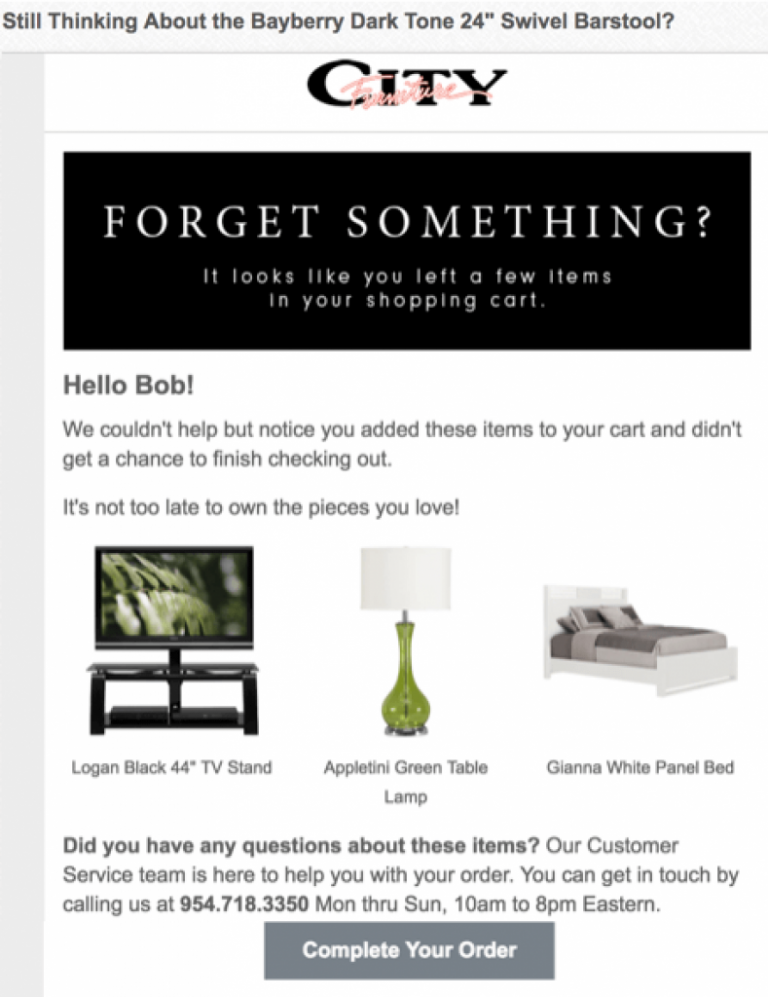
(Source: Author’s screenshot)
As you can see, the email follows a simple format: the images of items left in customers’ carts, some handy contact details, and a “complete your order” call-to-action button. The email is focused and personalized – designed to convert promising leads into paying customers.
Social Media
The fact there are over 2.4 billion active social media users around the world means you should be using these platforms to their full potential.
The lion’s share of social purchases has been through Facebook and to a lesser extent, Instagram. Yet, all the major social media platforms have seen increasing retail activity over recent years. Instagram did also recently announce that businesses are now able to schedule their photos/posts. Even Snapchat has recently announced a move to scale-up its e-commerce operations.
With the number of social platforms increasing that can be used for e-commerce, it makes sense to automate this process. So, if you haven’t already, consider using tools like Hootsuite or Buffer to help organize your social media strategy.
Checkout Process
The checkout process is where your hottest leads are going to be. Using automation, you can maximize the value you gain from the shoppers who make it to checking out.
Brent Peterson, Chief Magento Evangelist at Wagento, suggests “allowing clients to add something to the order after they have purchased.” This is a new twist on product recommendations which have been around for a while.
The difference with this approach is the immediacy after the purchase has been made. Consider downloading a post-checkout cart plugin to enable you to automate product recommendations.
Shipping
The key to automation is to understand that when it works, it makes your e-commerce store far more efficient. Shipping is the one area where having streamlined, automated processes in place will make a real difference.
Using software like ShipperHQ and ShipStation, you can automate processing, fulfillment, and shipping of orders. This will take some weight off your shoulders as you work to scale-up your business.
2. Smart and Voice Search
The standard keyword search was turned on its head when Google began adding relevance and context to the mix. Not only have internet searches evolved to return results with the aim of giving users more of what they want, beyond the words they use, on-site searches are also getting smarter. As Phil Jackson, e-commerce evangelist at Something Digital says,
“On-Site Search is evolving daily. The most innovative sites in 2018 provide multiple ways for customers to interact with search: from providing facets to filter results directly within a predictive search results panel (on every page of your site!) to natural language processing; to *contextual* search to further refine a result-set: customers have higher demands now more than ever that search work the way that they expect it should work.”
Although many content-management systems have built-in search capabilities, most don’t apply leading edge technologies, such as AI and Natural Language Processing effectively. This is an area that emerging technology companies such as Klevu are addressing. As Miles Tinsley, business development at Klevu, explained,
“A smarter search solution is becoming increasingly popular for e-commerce merchants.” He emphasized the importance of natural language processing, which makes it possible for onsite search to recognize synonyms, slang terms and regional language variants.”
The methods of user interaction with search is also evolving. One of the emerging trends within the e-commerce space with regard to searches is vocal control. With the arrival of Amazon Echo and Google Assistant devices, more people are “speaking out loud” to shop.
Given the fact that 20% of mobile searches on Google are vocal, this is a trend that’s only likely to keep growing. It’s clear from surveys that the younger generation has embraced this approach to interacting with digital interfaces.
In recognition of this, Google and Walmart recently announced a partnership to enable customers to order groceries by voice alone. Amazon was even quicker off the bat in organizing similar partnerships with Uber and Domino’s.
As with most new technology, quite how voice search will affect e-commerce remains unknown. However, there’s no doubt it’s a trend that’s around to stay, so optimize your site with this in mind.
3. Mobile Commerce (M-Commerce)
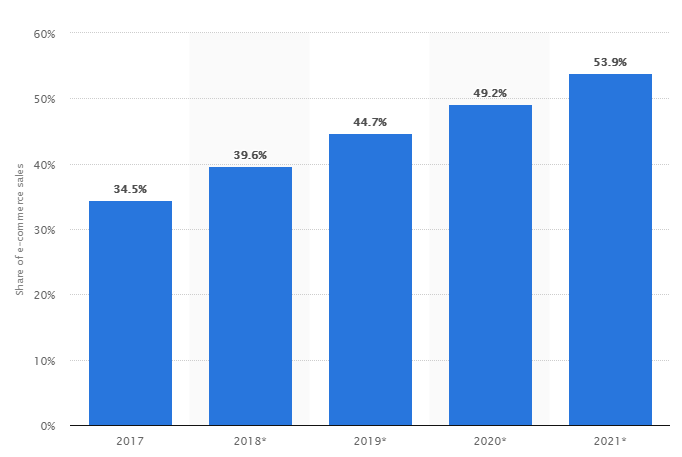
U.S. mobile retail commerce sales as percentage of retail e-commerce sales from 2017 to 2021 (Source: Statista.com)
Mobile shopping continues to surge. In the US, m-commerce is set to ramp up to 40% of all online retail sales. This means you should be focusing on making your e-commerce store experience as mobile-friendly as possible:

(Source: Booking.com)
This search page from Booking.com is a great example of how brands are optimizing their mobile sites. The oversized format and minimal content make it easy for the user to select their options and navigate through the process.
A challenge with m-commerce apps is image display. Outdoor apparel brand, REI makes product images the central part of product-pages for an almost full-screen experience:
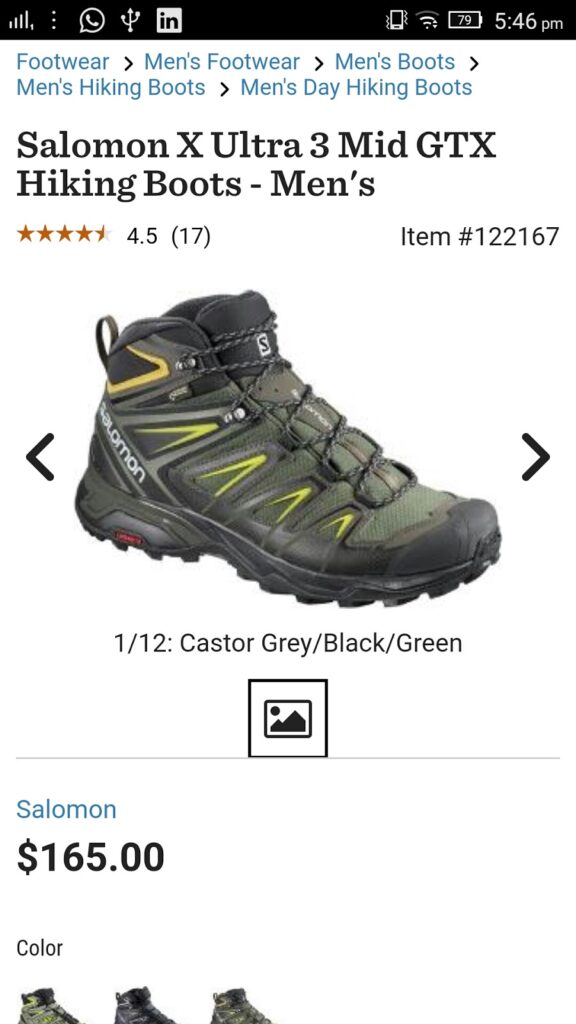
(Source: Rei.com)
This leads to an image being high-resolution enough for mobile users to really see the detail. And details matter. Make it as easy as possible for shoppers to see what they intend to purchase and you’re bound to drive conversion rates.
And, in this era, it’s not nearly as expensive to develop mobile apps as it was years ago with the adoption of Progressive Web App (PWA) standards and technologies. PWA’s combine the best of the web and apps. They aren’t native apps, yet behave as such and are much simpler to deploy. Maier Bianchi, founder of e-commerce consultancy Bemeir, sees increasing adoption of PWAs and recommends their use to his clients unless they have a very specific need to draw on native app capabilities.
4. Be an Expert for a Market Segment
Being an expert and having in-depth knowledge about certain niches or products can be a top selling point, particularly for products that have a strong and passionate customer base.
The key is to find a niche where there’s a healthy balance between demand and competition. Once you have done the research and identified a gap in the market, you start selling the products to the niche audience who are already looking for your products on the web.
As a specialist store, you need to demonstrate your knowledge and prioritize customer service. And this strategy can also work for commodity products or any of those that could be easily purchased from Amazon.
B&H Photo Video is a New York-based store absolutely nailing this strategy:
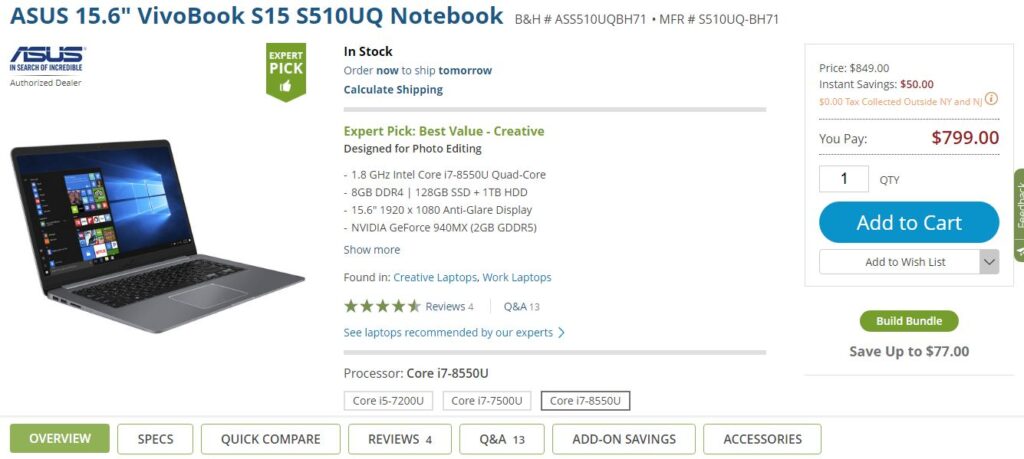
(Source: Bhphotovideo.com)
Using smart design, the store displays all the essential information about products without the need to scroll. The ratings and reviews are also a good addition, giving the customer that extra level of reassurance.
What sets B&H Photo Video apart from their competition is what happens when you scroll down:
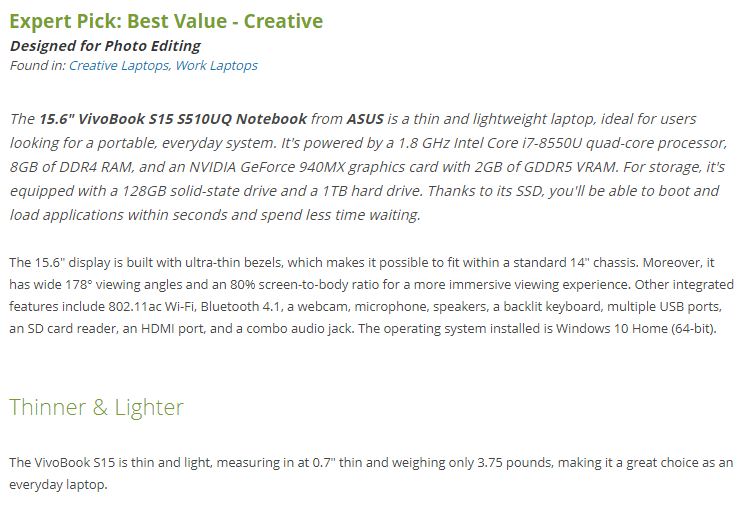
(Source: Bhphotovideo.com)
The level of knowledge on display here is exceptional for an e-commerce store. It provides a wealth of useful information to the customer and directs them to the right products for them.
In delivering a high standard of customer service, and showing they are the authority on the products they sell, B&H Photo Video is able to charge premium prices and still provide excellent value.
5. Apply Consumer Concepts to B2B
In the early days of e-commerce, B2B was seen as a separate entity from B2C businesses. The common thought was that business services were too complex for widespread online retail.
Yet in recent years, B2B businesses have embraced e-commerce. There’s a growing realization that professional clients need to be treated in the same way as consumers.
The Maid Coach, is one of those businesses that have made this step into e-commerce:

(Source: Themaidcoach.com)
As its founder, Debbie Sardone explains, e-commerce has allowed The Maid Coach to offer “a high-quality brand of eco-friendly products” to business clients.
Having started as a business consultant, Debbie has embraced online retail to expand her business.
Another excellent example is Going Bloom, a floral wholesaler. According to Casey Wagner, the company cuts out the middleman and “works with suppliers and farms across the globe.” This enables the business to “deliver fresh flowers” to florists and floral designers.
As well as focusing on quality products, Going Bloom has invested in a smart website:
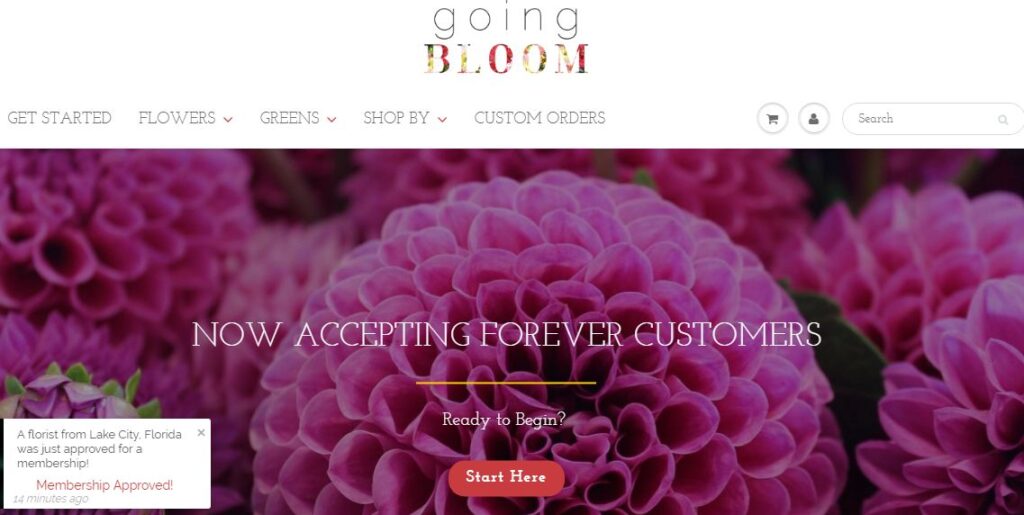
(Source: Goingbloom.com)
These two examples are demonstrative of how B2B businesses have embraced e-commerce. As you can see, the focus is still on delivering a great service. However, a dynamic online presence helps communicate these excellent standards to potential clients.
Conclusion
As we come towards the end of the first quarter of 2018, it’s clear these are exciting times in e-commerce. The emergence of smart search, mobile commerce, and automation are not entirely new concepts. However, they are all starting to make a big impact on online retail in a significant way.
Voice search, for example, may simply be a more convenient way to shop for many. Yet it can have a huge impact on the way SEO works and how e-commerce sites should be set up. The time to prepare for this is now, as the younger generation become more active shoppers, and they’re not shy to embrace new technology.
Automation has long been a key area for efficient e-commerce businesses, and it’s constantly evolving. It pays to review your current processes and do the research on what’s new. There’s always a chance you could automate a new area of your business, including shipping and email marketing.
B2B e-commerce is a great example of how companies are becoming more tech-inclined. By continuing to embrace the digital transformation, the relationships between wholesalers, buyers, sellers and even distributors become more efficient. It also gives B2B companies wider reach. There’s no longer the excuse that B2B products/services aren’t suitable for online.
And this year’s biggest trend could be the continued rise of m-commerce. Studies have shown shoppers are becoming increasingly comfortable with the idea of making purchases on their smartphones. Now, there’ll no longer be an excuse to not have a mobile optimized site.
Be proactive, and never stop looking at the latest ways to boost your e-commerce store, even if it means embracing and trying out new tools and technology. In this highly competitive space, look into things that gives your business an edge.



